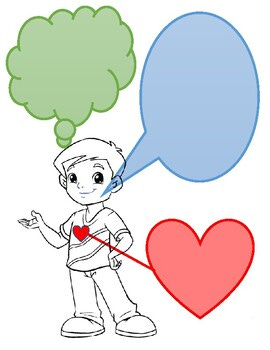The Power of Expression
Self-expression and reflection
Sameera is 14 years old. She loves to talk and express herself. Mudit prefers not to talk much. He just carries a diary around, Every now and then he writes something in it.
Both Sameera and Mudit have different forms of self-expression.
Why is self-expression important?
Imagine the number of experiences a child goes through every day. What goes on in their mind? How do they feel about it? More importantly, how are they communicating their thoughts?
Being able to express their thought and feelings in words is the best gift we can give a child. But, what is so great about it?
Self-awareness- The more a child is able to reflect and article their express. The more self-aware they are.
Self-reliance- Self-aware children are able to understand their problems better, the reasons behind them, and solve them on their own too.
But aren’t children expressive by nature?
Yes. Children do speak a lot and talk about what’s going on in their minds. But the difference between building self-expression and speaking is reflection.
Reflection enables a child to think about their experiences and the impact it has on them. It also helps us understand what’s going on in their lives and focus on details we might have missed out on while talking casually.
Reflection makes it easier to communicate different life events.
So, What are some ways to build self-expression?
Writing- Writing prompts are a great way to express. Simple prompts like “What was the favorite part of my day.” “What do I like about myself” These are great writing prompts to reflect and express.
Poetry- Writing prompts can also progress to writing poetry. Poetry doesn’t always mean that words have to rhyme. Poetry helps children see feelings are tangible things. For example: Imagine if joy was a character? What would it say? What color would it be? How would it look? Now convert these lines into a poem.
Painting- Sometimes colors as a great way to express too. Ask a child to pick any color and paint their heart out. After painting, you could help kids verbalize why they painted this. You could ask, “ I see you used a lot of red. Why did you do that.” Art can reveal a lot of hidden feelings that words might be unable to convey.
Movement- A child’s first form of communication is nonverbal which is through movement. So it’s no surprise the movement is a way to communicate as well. Give them different movements like such as gliding, crawling, running, skipping, or sliding with different types of music. You can start the movement and then the child can mirror you. Soon, let the child improvise on their own. In the end, ask them which movement did they like and did not like. This is a great way to find out which movement helps your child calm down and express various emotions too.
Photography- The photos a child clicks are also a way of expression. It’s their way of communicating how they see the world. What is important to them and why they took a picture of it. Give the child a camera and observe how they see the world. Ask them about the photo they took and understand the reason behind it. You’ll be surprised to see how different the same world can look to different children.
Remember, when we raise children we are not just raising kids but future adults. Self-expression will support these future adults in unpacking their feelings and thoughts to express them in healthy ways.








I accidentally stumbled on your blog and just wanted to let you know that I really appreciate these write-ups. The structure in which you explain and then offer possible ways to deal with the issue is revelatory and helpful. Thank you for taking this initiative and keep up the good work :)